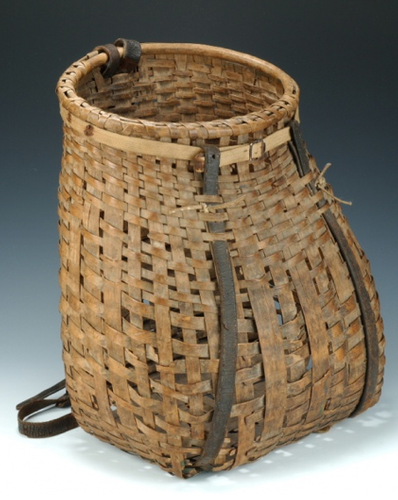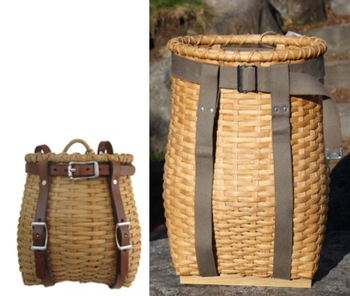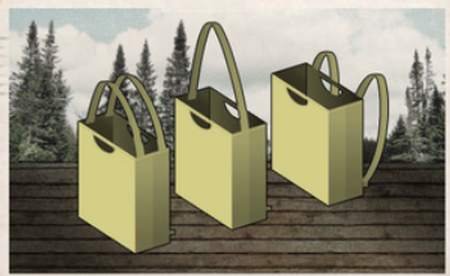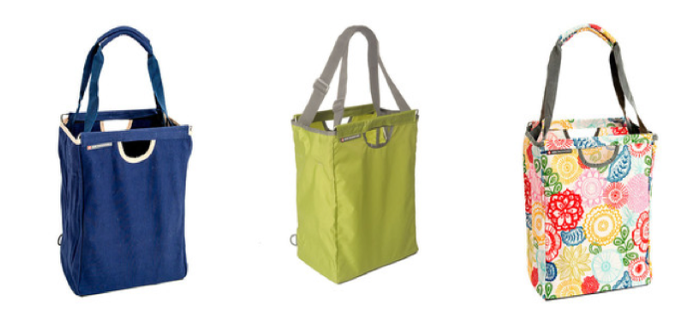Packbaskets
The history of packbaskets goes way back - in fact, archeological evidence has dated Native American packbaskets back to 900 B.C., when they were used as a means of transporting fishing and hunting supplies. French settlers are believed to be responsible for creating the packbasket we recongize today (ADK Baskets). The practicality of the packbasket made it popular amongst trappers and hunters who could use them to carry their equipment while they moved around. The design of the packbasket allowed it to conform to the contour of its owners back, while at the same time protecting them from any sharp or pointy parts of its contents. The materials used to make the basket are lightweight, yet strong, and the baskets were desgined to be quite roomy to accomodate large loads. The traditional materials for creating these baskets were black ash and willow. The wood would be hand-pounded and then split into many strips, which would be woven around slightly thicker vertical splints. The thickness of the vertical splins allowed the packbaskets to stand freely on their own. Traditionally, the baskets were made by the individuals who intended to use them, not by "crafters," or professional weavers. This individualistic creation of the baskets resulted in a wide range of sizes and shapes of baskets (ADK Baskets).
The packbasket shown below is a traditional packbasket woven around 1880 by Orsen Schofield Phelps (1817 - 1095). Phelps was an Adirondack guide for the Keene Valley region in New York. The body of the packbasket is wide and the mouth is round. Due to its age, some of the ash splint are slipping out of the woven structure, or have fallen out completely. The straps are leather. The supporting strip around the rim - which might be a replacement - is canvas.
Modern day packbaskets are most commony referred to as "Adirondack" packbaskets because of their extensive use in the Adionrdack region. They are one of the oldest surviving traditions in the Adirondacks (Adirondack Museum). They are more commonly created using reeds, instead of black ash and willow. They are also adorned with the addition of wooden feet and an inside base in order to make them even more durable. The baskets are also usually finished with a boiled mixture of linseed oil and stain that give them an aesthetically pleasing outer coat, as well as seal them off from outside moisture. With the additional features and our modern day economy, owning one of these modern day packbaskets costs a pretty penny. The two pictured to the right, available on the online gift store of the Adirondack Museum, cost $70 (left) and $150 (right). The $70 is a mere 5 inches tall. The basket on the right is 14 inches tall.
Today, small businesses are modifying the traditional packbasket in order to make it capable of withstanding many activities suited to a modern day lifestyle. Adirondack Packworks modern innovation of the packbasket has designed their packbaskets with a lightweight, semi rigid internal frame to make it suitable to wide a range of activities. Their modern design folds easily, yet also stands upright, independent from a load. They have also incorporated adjustable straps that can be fixed in three different carrying positions - two-handled, over the shoulder, or backpack style - depending on the activity. The different strap positions are shown below.
ADK Packworks has also designed the packbacks using varied fabrics and prints. The blue pack below is canvas. The green pack is Packwork's original basket and is made using nylon. The last basket is created using polyester and is printed with a fun floral design.




